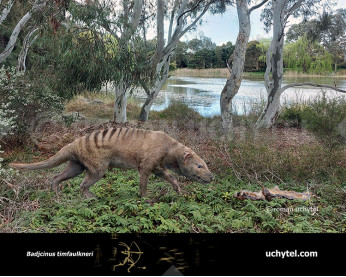Thylacinus cynocephalus (Tasmanian wolf, Tasmanian tiger)
131131Thylacine, Tasmanian tiger (Thylacinus cynocephalus Harris, 1808)
Order: Dasyuromorphia
Family: †Thylacinidae
Dimensions: length - 1,3 m, tail - 65 cm, height - 60 сm, weight - 20-30 kg
Temporal range: Native to continental Australia, Tasmania and New Guinea, it is thought to have become extinct in the 20th century.
A typical representative: Thylacinus cynocephalus Harris, 1808
The thylacine was the largest known carnivorous marsupial of modern times. It is commonly known as the Tasmanian tiger (because of its striped back) or the Tasmanian wolf. Native to continental Australia, Tasmania and New Guinea, it is thought to have become extinct in the 20th century. It was the last extant member of its family, Thylacinidae, although several related species have been found in the fossil record dating back to the early Miocene. The mature thylacine ranged from 100 to 130 cm long, plus a tail of around 50 to 65 cm. The largest measured specimen was 290 cm from nose to tail. Adults stood about 60 cm at the shoulder and weighed 20 to 30 kg. There was slight sexual dimorphism with the males being larger than females on average. The thylacine was noted as having a stiff and somewhat awkward gait, making it unable to run at high speed. It could also perform a bipedal hop, in a fashion similar to a kangaroo—demonstrated at various times by captive specimens. Guiler speculates that this was used as an accelerated form of motion when the animal became alarmed. The animal was also able to balance on its hind legs and stand upright for brief periods.
Thylacine, Tasmanian tiger (Thylacinus cynocephalus Harris, 1808)
Order: Dasyuromorphia
Family: †Thylacinidae
Dimensions: length - 1,3 m, tail - 65 cm, height - 60 сm, weight - 20-30 kg
Temporal range: Native to continental Australia, Tasmania and New Guinea, it is thought to have become extinct in the 20th century.
A typical representative: Thylacinus cynocephalus Harris, 1808
The thylacine was the largest known carnivorous marsupial of modern times. It is commonly known as the Tasmanian tiger (because of its striped back) or the Tasmanian wolf. Native to continental Australia, Tasmania and New Guinea, it is thought to have become extinct in the 20th century. It was the last extant member of its family, Thylacinidae, although several related species have been found in the fossil record dating back to the early Miocene. The mature thylacine ranged from 100 to 130 cm long, plus a tail of around 50 to 65 cm. The largest measured specimen was 290 cm from nose to tail. Adults stood about 60 cm at the shoulder and weighed 20 to 30 kg. There was slight sexual dimorphism with the males being larger than females on average. The thylacine was noted as having a stiff and somewhat awkward gait, making it unable to run at high speed. It could also perform a bipedal hop, in a fashion similar to a kangaroo—demonstrated at various times by captive specimens. Guiler speculates that this was used as an accelerated form of motion when the animal became alarmed. The animal was also able to balance on its hind legs and stand upright for brief periods.

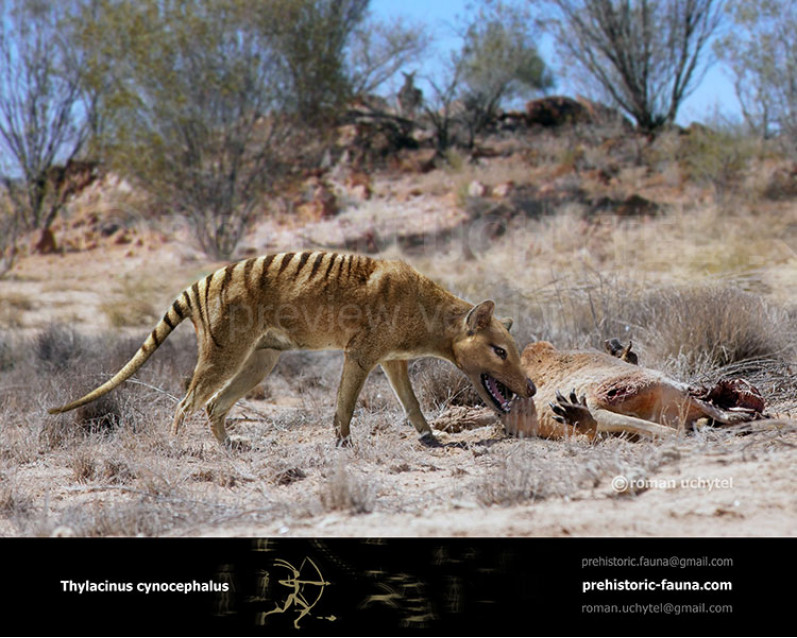
-797x638.jpg)
1-797x638.jpg)
1-797x638.jpg)
2-797x638.jpg)
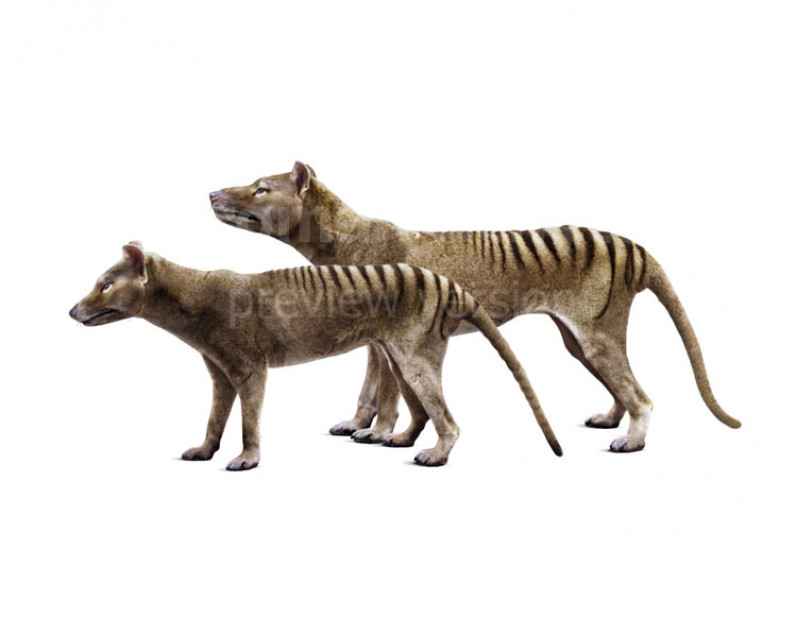
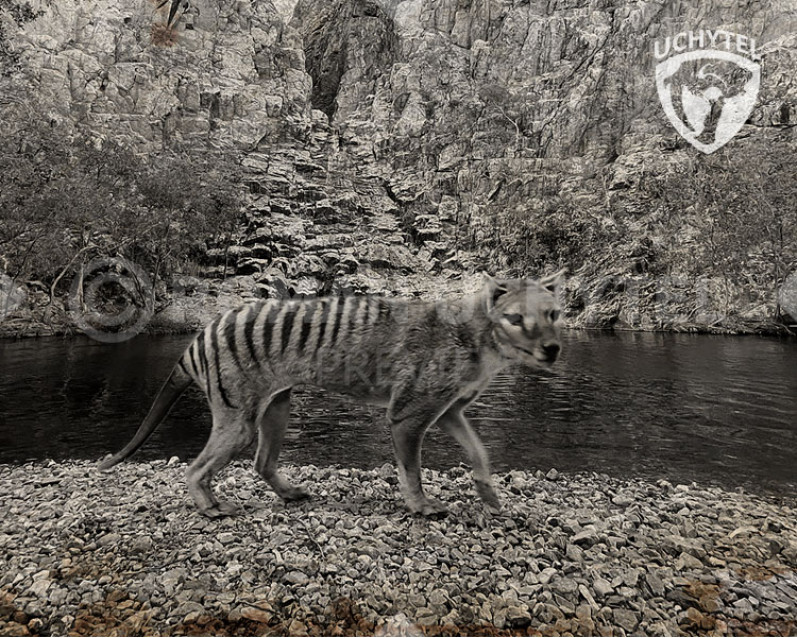

-70x56.jpg)
1-70x56.jpg)
1-70x56.jpg)
2-70x56.jpg)


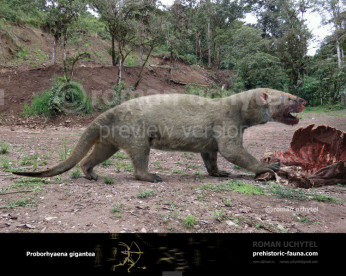

-346x277.jpg)
